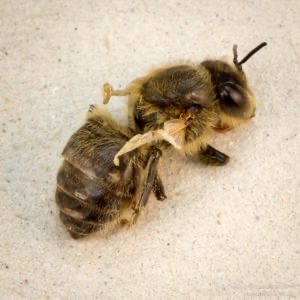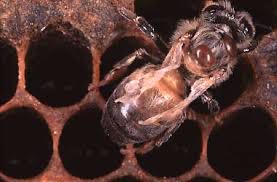Deformed Wing Virus
- rushingriverapiaries

- Jan 16, 2023
- 2 min read
Updated: Apr 30, 2024
Deformed Wing Virus is one of the more common bee diseases. It is present in low levels in most apiaries, and is usually asymptomatic. At higher levels, the symptoms are quite obvious and sad to behold. It is vectored by varroa mites and there is no treatment for it, although with good varroa management and decisive action when it is detected, you can usually help your bees overcome it.
Symptoms:
The most obvious symptom is shrivelled, twisted wings on adult bees.
Sometimes this will be accompanied by other signs of mite stress like spotty brood pattern, dwindling population, no foragers when other hives are flying, and perforated brood cappings.
*These are not my images
Prevention:
The best prevention is a good varroa management strategy, including frequent testing, inspections for signs of mite stress, and treating when necessary to keep mites below threshold levels
Treatment:
If you do find this in your hive, it's not one to panic about. I have seen several hives rebound to excellent health after finding evidence of DWV.
Treat aggressively for mites (I recommend Formic Acid as a quick-acting and hard-hitting option)
Reduce hive space so that they bees are filling the space they are in
Feed 1:1 syrup to help the bees flush out the virus.
What does the Research Say?
This study found that DWV has very little impact on bee health in the absence of DWV. It can be passed from parent to offspring, and also from worker to larvae through feeding. Symptoms become visible once varroa mites are introduced.
This article helps explain why that might be the case. They found that the virus is able to replicate in the varroa mite, and then pass in higher loads to the mite's next victim. This replication is the difference; symptoms are only visible at this higher viral load.
Looking for more?
Looking for more beekeeping education? You can find my virtual, on-demand course Intermediate Beekeeping for Year 2 and Beyond at https://courses.rushingriverapiaries.com/courses/intermediate-beekeeping
Or if you'd prefer a more tailored experience, you can join my mentorship group at https://www.patreon.com/thehivementorship







Comments